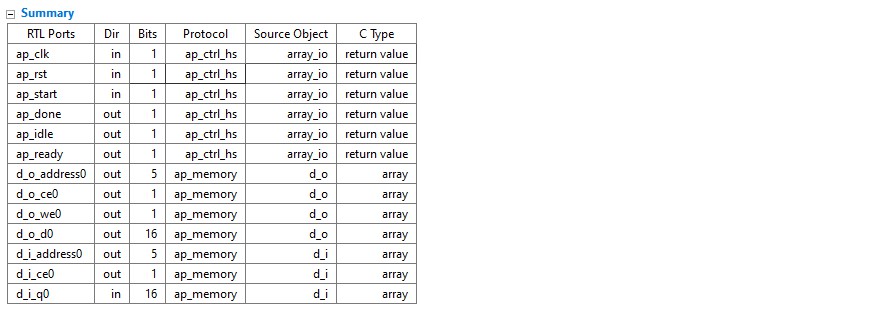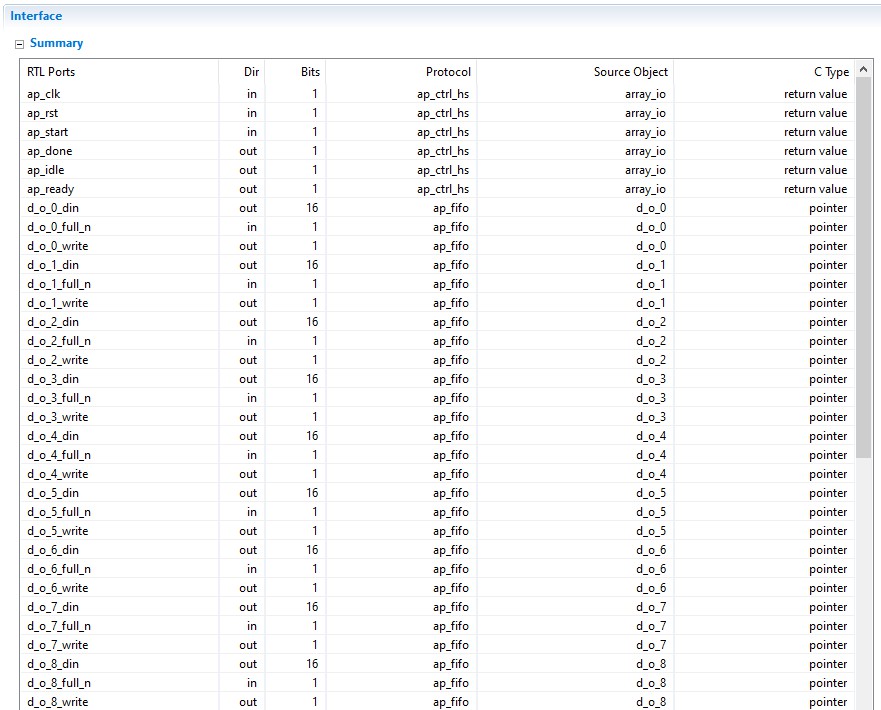Default Array HLS configuration
Contents
Refer to chapter 4 - lab 3 - Implementing Arrays as RTL Interfaces
Here is a function with input array (i.e. din_t d_i[N])
_
Synthesizing array arguments to RAM ports is the default. You can control how these ports
are implemented using a number of other options.
Using a single-port or dual-port RAM interface
Vivado HLS automatically analyzes the design and selects the number of ports (either single or dual port) to maximize the data rate
Single Port
Note: If you specify a dual-port RAM and Vivado HLS determines that only a single port is required,
it uses a single-port and will override the dual-port specification.

Dual Port (with required unroll)
The first thing you must do is unroll the for-loop and allow all internal operations to happen in
parallel, otherwise there is no benefit in multiple ports: the rolled for-loop ensure only one
data sample can be read (or written) at a time.

This allows input data to be processed faster - but with only one FIFO output.
By using a dual-port RAM interface, this design can accept input data at twice the rate of
the previous design. Because the for-loop was unrolled, the logic in the loop is able to
consume data at this rate. By default, each loop iteration is executed in turn. This
implementation code limits the logic to one read on d_i in each iteration. Unrolling the
loops allows more reads to be performed (but creates N copies of the logic). However, by
using a single-port FIFO interface on the output the output data rate is the same as before.
Using FIFO interfaces
Without FIFO

With FIFO

Different port usage
Partitioning into discrete ports
When partitioning output in blocks of 4, and inputs in blocks of 2

- The design has the standard clock, reset, and block-level I/O ports.
- Array argument d_o has been implemented as a four separate FIFO interfaces.
- Argument d_i has been implemented as two separate RAM interfaces, each of which
uses a dual-port interface. (If you see four separate RAM interfaces, confirm a partition
factor for d_i is two and not four).
All discrete ports

Comparison


Dual Port No-FIFO vs Dual Port FIFO
Without the FIFO interface, there is a lower latency and interval (19 vs 33).
Whilst there are less FFs being used (-0.86%), there are more LUTs used (+3.72%)